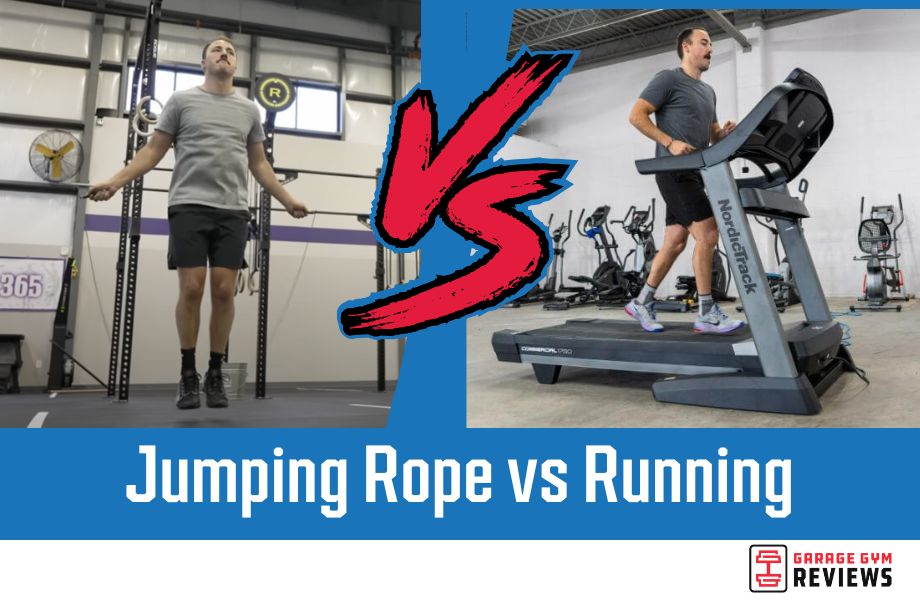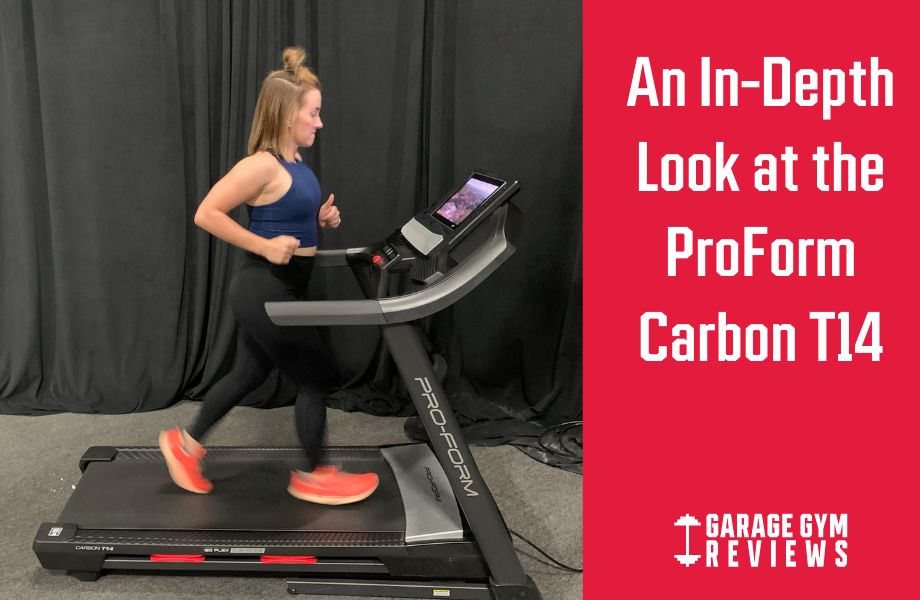King Kong vs. Godzilla
Brady vs. Manning
Mrs. Johnson vs. The Harper Valley PTA
Jumping rope vs. running?
It may not be the first epic struggle that comes to mind, but if you are looking for a quick, affordable cardio workout, it may be the very question on the tip of your tongue.
Both jumping rope and running offer similar advantages. Each offers an affordable, low-tech workout routine you can use to get your heart rate up and promote weight loss. As a personal trainer and fitness enthusiast, I know (and have experienced) the pros and cons of both modalities. Continue reading below for assistance choosing your particular flavor of gymless cardio.
Key Benefits of Jumping Rope and Running
Whatever your fitness level, jumping rope and running each provide general health benefits, such as reduced risk of heart disease, lower body weight, and improved general cardiovascular health.
Hitting the jump rope offers a lower impact workout than running, in part due to a smaller range of motion used. The bilateral landing position with all the joints stacked up vertically also provides for better force absorption.
While you may be able to find jump rope contests, they are nowhere near as ubiquitous as the 5k has become. Signing up for a race, and even training with a local running club, can focus your training. Having a specific date and event to compete in forces you to stay accountable and provides excellent motivation to get out of bed and train.
| Benefits of Jumping Rope | Benefits of Running |
|---|---|
| Low-impact | Fresh air, open road |
| Increased lower body/upper body coordination | More chances for competition and major goals |
| Burns more calories per hour* | Running clubs |
*Caloric burn data based on information from a Harvard Health study
RELATED: Benefits of Jumping Rope
Muscles Used
By its nature, jumping rope can provide more of a full-body workout than running. You have to coordinate the muscle groups of your upper body and lower body together to keep the action of the rope going.
Shoulders and wrists act as the primary mover of the rope (deltoids and forearms), the calves provide for the “jump” aspect of jumping rope, and the knees (quads) catch your body on the way down.
Running is a leg-dominant activity (quads, hamstrings, and glutes), but sprinting can actually be an underrated ab workout.
Just like when performing powerlifting moves like squats and deadlifts, your core has to stay braced when you sprint at maximal speeds. Solid abs and obliques allow you to produce maximum power through the ground (and not fall over).
| Muscles Used Jumping Rope | Muscles Used Running |
|---|---|
| Shoulders | Quads |
| Forearms | Glutes |
| Calves | Hamstrings |
| Quads | Abs |
Improving Cardio Fitness
When people say they want better cardiovascular endurance, I ask “Cardio like an NFL lineman or cardio like a marathon runner?” Fitness is task-specific, and may not always translate into improved performance across multiple disciplines, or even lead to health based outcomes.
For athletes looking to increase general fitness and improve performance, studies show there is cross pollination between these two workouts. In other words, jumping rope may actually improve your running times.
Both jumping rope and running improve basic cardiovascular fitness in the same way: You get your body moving, and you keep it moving.
Running for distance is often a slower-paced exercise that forces your heart and lungs to continuously supply your body with oxygen over a long period of time, whereas jumping rope is a full-body, explosive activity that can tap into your anaerobic system quickly.
Changing your regime to include work your body is less efficient at can lead to increased fitness gains. This can be something like swapping in jump rope workouts for runs, or vice versa. It can also be as simple as having some running workouts where you move fast (sprints or double-unders) for short amounts of time, and some workouts where you move slow for a long time (distance runs or on/off “rounds” of moderate jump rope).
The old Weider Principle of “muscle confusion” is sometimes laughed at, but in a way we are trying to confuse the body into using the heart and lungs in new capacities to solve different problems. The American Heart Association recommends a mix of moderate and vigorous aerobic activity for heart health.
Remember, cardiovascular fitness is about the healthy interplay between organs and the ability to efficiently and continuously regurgitate oxygen into and out of your blood flow. There are several health benefits to being in good shape; it’s not just about incinerating adipose tissue (AKA, burning fat).
Versatility in Workouts
The great things about jumping rope and running are the same: simplicity and versatility.
Useful for Steady-State Cardio
Running can be a great activity for regulating your heart rate during a workout. If you’re using something like the Maffetone method (or you’re just trying to stay in the 70%-80% aerobic training zone), slowing down and speeding up a run is as simple as that.
If you want to stay in an aerobic range without a heart monitor, you can use the old trick of carrying on a conversation while you run. Studies suggest this will keep you in the range where you see aerobic benefits. Train with a friend or do what I do and talk to yourself. Someone will finally get all your jokes.
You can do the same with jumping rope: Simply grab a rope and jump at a leisurely pace for 20 to 30 minutes. You can also set a number of jumps you want to do. To keep your heart rate lower, manipulate the workout into X sets of Y reps rather than trying to slam all the way through.
I should point out, it may be more taxing to do steady-state cardio with a jump rope as opposed to a leisurely jog, depending on your level of fitness and experience with the rope.
Useful for High-Intensity Cardio Workouts
Both modalities easily incorporate into high-intensity interval training (HIIT).
For example, jogging for one minute and walking for two minutes is great for new runners with a low aerobic base; it is mimicking the sort of aerobic workout you get with a long slow run. Just make sure you are slowly creeping up the ratio over time.
When it comes to using sprinting for actual HIIT, 10 to 15 seconds “on” can be extremely hard. Running 400-meter sprints on a track is fantastic for athletes, but most of the population’s leg muscles would explode trying to execute them. To get the anaerobic benefits of HIIT work, you really need to push hard for those short periods. I would say that 50 to 100 meters is a great place to start.
Jumping rope fast may be easier than sprinting hard, but way harder than running slow. It is perfect for short and medium intervals and circuit training. Tabata (20 seconds on and 10 seconds off for 4 minutes) is a great system to use with jumping rope.
Useful as a Warmup
Because jumping rope is a full-body workout, it makes a great warm-up before lifting weights or doing calisthenics. Running can also serve as a great warm-up, but it doesn’t hit your arms quite the way that a jump rope will.
Burning Calories
Here is an excerpt of a chart created by the good people at a little school somewhere outside Boston called Harvard Medical. It shows the number of calories burned per 30 minutes of activity. Each activity was measured in individuals in three separate weight classes.
According to LIVESTRONG.com, the average mile time for 5k participants is 10:58 for men, and 12:52 for women. Setting aside the fact that this is a population that has been actively training to run for 3.1 miles, the Harvard Medical chart suggests there are still more calories burned in 30 minutes of jumping rope. Trying to achieve the average speed of a 5k participant without specific training will be a tall task for most.
Amount of Calories Burned In 30 Minutes By People Of Varying Weight
| Activity | 125-lbs Person | 155-lbs Person | 185-lbs Person |
|---|---|---|---|
| Walking (15 minute mile) | 135 calories | 175 calories | 189 calories |
| Walk/JogJog= 10 minutes | 180 calories | 216 calories | 252 calories |
| Running (12 minute mile) | 240 calories | 288 calories | 336 calories |
| Running (10 minute mile) | 360 calories | 420 calories | 495 calorie |
| Running (8 minute mile) | 375 calories | 450 calories | 525 calories |
| Running (6 minute mile) | 453 calories | 562 calories | 671 calories |
| Jumping rope (slow) | 226 calories | 281 calories | 335 calories |
| Jumping rope (fast) | 340 calories | 421 calories | 503 calories |
Burning Fat
Research indicates both jumping rope and running are effective ways to burn fat. Moving fast for short periods tends to be better than moving slow for long periods for weight loss.
Studies demonstrate that sprinting is the gold standard for weight loss. Exerting maximal effort for short bursts of time taxes your body’s resources. Because of the intensity and short time span, sprinting can actually help preserve muscle, or in some cases, it has been proven to encourage new muscle growth.
Jumping rope has also proven to have a very good track record with eliciting fat loss. Double-unders have even shown a positive correlation to sprint speed, indicating a similar metabolic stimulus.
While high-intensity techniques have been all the rage this century, steady state running can still have its place in a fat loss plan. Novice exercisers in particular may benefit from this modality, as the stress place on the body is lower.
Who Should Avoid Jumping Rope and Running?
No physical activity is totally free from the risk of injury. Our goal when choosing a cardio exercise is to limit that risk by selecting the most appropriate movements and modalities for our bodies and limitations.
While jumping rope is used to increased bone density in subjects at risk of osteoporosis, people who already have the disease are advised to avoid jumping movements. The high impact of running would also be a contraindication for populations with osteoporosis. Something lower impact like a recumbent bike or walking would better serve this group for cardiovascular exercise. Using safer and more efficient strength training movements to help with bone density is also recommended.
While training hard can be good for the entire cardiopulmonary system, anyone with heart disease needs to talk to their doctor about safe exercise ranges. You may need to moderate the intensity of your workouts and avoid getting into anaerobic ranges.
Both running and jumping rope can be hard on the knees, ankles, and hips with certain pre-existing conditions. Even healthy populations are advised to work with a certified personal trainer to dial in your technique to avoid imbalances and pain.
How to Choose: Jumping Rope vs Running
Listen to your body. For your mental health, choose something you enjoy doing. Few people ever get really good at something they hate.
Body transformation can take a long time; finding joy in the activity itself is the perfect way to change your focus from navel gazing and obsessive scale checking.
If you are a social person, finding a running group may be the perfect thing for your training. If you are an antisocial person, finding a beautiful route that allows you to throw in your earbuds and be alone with yourself might be the ticket.
If you have very limited time and space for your workouts, skipping rope may allow you to create an oasis in your daily schedule, and still do all the calorie-burning you need.
FAQs About Jumping Rope vs Running
Is jumping rope better than running?
Is Pepsi better than Coke? We don’t need to be zealous or dogmatic about what we think of as good cardio.
You should pick either a running workout or a jump rope workout based on what you enjoy and will actually do. The inimitable Stan Efferding says “Compliance is the science.”
The number of calories burned from theoretical workouts doesn’t count. Our guide will take you through the ups and downs of each.
Can jump rope replace running?
If you hate running, it can. Now, if you want to win the Boston Marathon you’re going to have to slap on your running shoes and rub out those shin splints. If you just want to get in some cardiovascular exercise in a short period of time and your idea of a “jogging” is briskly waddling to the water fountain after a sick set of triceps pushdowns, feel free to do a jump rope workout instead.
What is jumping rope for 30 minutes equivalent to in running?
You will burn roughly the same number of calories as running for 3-5 miles, according to a Harvard Health study. As long as you aren’t dropping sub-6 minute miles, jumping rope will let you burn those calories more quickly. Advancing to double-unders will burn even more calories.







